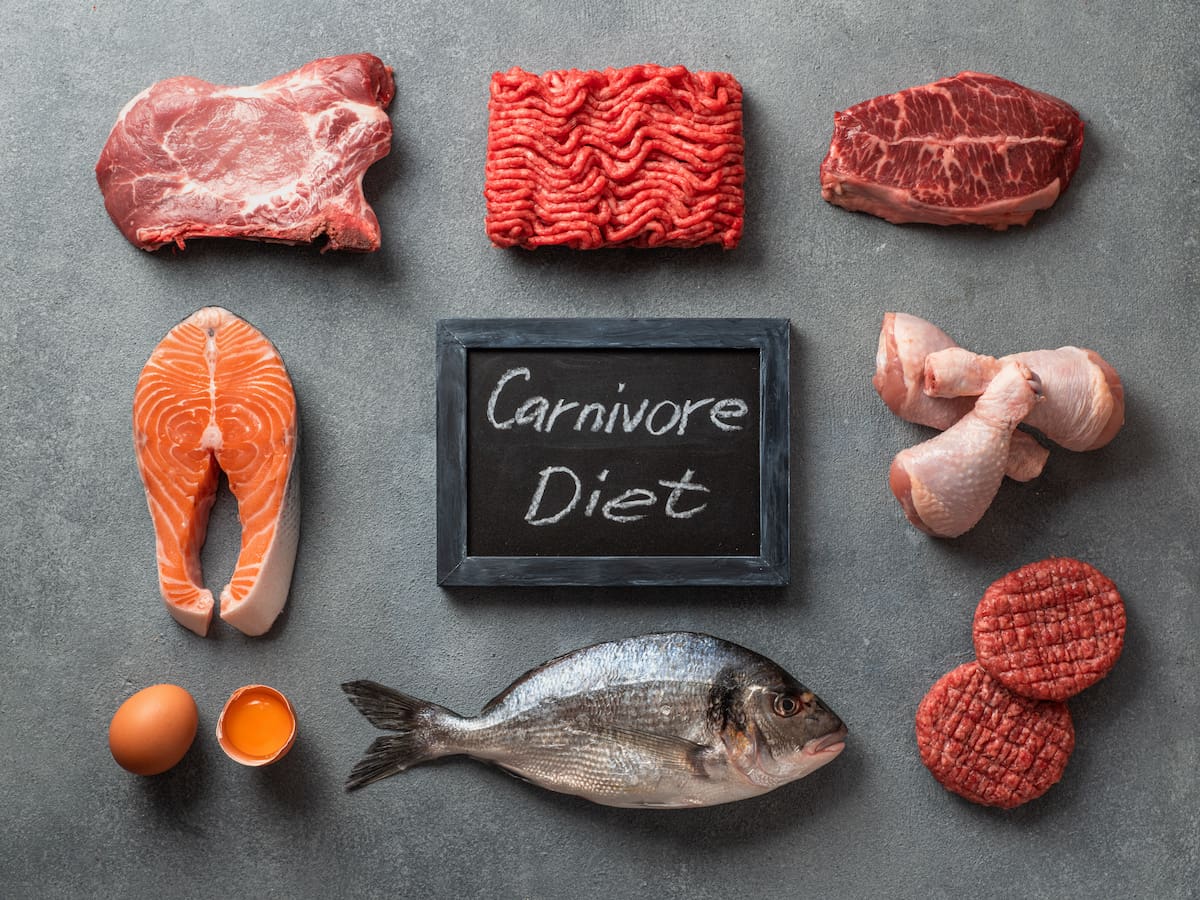It’s the new weight loss fad on the block noone saw coming: the carnivore diet. For the uninitiated, the carnivore diet does exactly what it says on the packet: a meat-only eating regime, where anything that doesn’t come from an animal (think: vegetables, fruit, grains) is strictly off-limits. What’s left on the menu is… well, not much: red meat is the preference – with beef and lamb favoured most heavily.
Animal products like eggs, dairy and offal (such as pâté, foie gras, sweetbreads) are also ok, but that’s about it. The very limited number of foods on offer may contribute at least in part, to its alleged weight loss efficacy, for most people, there is only so much steak one can eat (or afford).
In an age when plant-based eating has never been more popular, the rise of the carnivore diet seems unlikely. But like any weightloss trend worth its hashtag, the carnivore diet can thank social media – at least in part – for its rise to infamy. Beyond its extreme restriction, there’s another factor that may explain its so-called success: protein. With nothing but animal products on the menu, you can’t help but eat but consume a very high protein, totally no carb intake. And that, at least in the short term, can lead to weightloss. “Although not guaranteed, the carnivore diet might result in weight loss as it is very high protein from only allowing meat and animal products to be consumed,” explains The Lifestyle Dietitian’s Erika Hung. “Protein is one of the most filling nutrients so it may lead to eating fewer calories therefore weight loss.”
But is it sustainable? And what are the other health implications of eating nothing but meat? We delve into the science to find out…
What is the carnivore diet?
The carnivore diet is a high-protein diet that relies on animal products and excludes all plant-based foods such as fruit, grains and vegetables. What makes it different from other high-protein eating plans, is that the carnivore diets is strictly no carbs, at all. People who adhere to carnivore diet usually eat red meat, such as beef, lamb, goat, as well as eggs and dairy products. Meanwhile, animal protein sources, such as pork, poultry, and seafood, are permitted but less commonly eaten (1).
Carnivore diet vs paleo, what is the difference?
There are clear similiarities between the paleo and carnivore diets. Both are very high in protein. However, the paleo diet allows plant-based food consumption, such as fruit, veggies, and nuts. Therefore, carbohydrates equate for about 25% of the total energy intake, protein for about 30% of total energy intake, and the rest is fat (2).
The main idea of paleo diet is eating wild and natural foods such as fruit, veggies, meat fish, nuts, and eggs that were commonly consumed during the paleolithic era before industrial farming methods were developed, (2). Grains, dairy products, sugar, salt, and processed foods are all off limits in both diets (2).

Why do people follow the carnivore diet?
The most common drawcard is undoubtedly weight loss, especially those with Type 2 Diabetes (T2DM) (1). There is also suggestions that T2DM patients have reduced diabetic medication usage and lower HbA1c, a biomarker indicating the glucose level. These reports may be analogous with reports on Arctic or nomadic people where a carnivore diet was applied as nutrition therapy for T2DM before the discovery of insulin (1).
Related Posts
Is the carnivore diet healthy?
One of the gravest concerns of the carnivore diet is its nutritional imbalance. High intakes of animal proteins, known to be rich in saturated fat contents, will potentially increase the risk of cardiovascular diseases. As the diet excludes fruit and veggies, it may lead to vitamins and mineral deficiencies. Antioxidants and other nutrients that are known to be beneficial in preventing cardiovascular disease are also by default absent in this diet (1). Another implication from the absence of fruit and veggies is the lack of fibre intake that can affect gut health and the digestive system (1). “With so many food groups cut out, the carnivore diet isn’t sustainable for most of us long-term. It can make eating out and social occasions challenging – pizza, pasta and pad thai are completely off the menu!” explains Erika, who is also an accredited practising dietitian. “Animal meats and products also tend to be more expensive at the supermarkets compared to budget-friendly items like grains, bread, canned beans and frozen vegetables.”
A high protein diet can also be dangerous for people with pre-existing health conditions. High protein diet tends to increase glomerular filtration rate (GFR) that should be avoided by people with chronic kidney disease (CKD) or at risk of CKD, such as diabetic and obese people (3). High consumption of red meats is also associated with the increased risk of CKD as Gut flora transforms choline and carnitine into trimethylamine (TMA) and TMA N-oxide, which are associated to renal fibrosis (3). “When it comes to the environment, livestock production has high greenhouse gas emissions. It also requires clearing forests to create pasture and land to meet the rising demand for animal feed and uses scarce non-renewable resources like water,” says Erika. “Overdoing this in your diet then has a flow on effect on the health of our planet.”
That’s not to say we should strike out all meat from our diet. “Eating enough lean meat, chicken, fish and dairy is wonderful for getting enough protein to stay full and meeting requirements for nutrients like iron, zinc, vitamin B12 and calcium,” says Erika. “We can best reap these benefits by aiming to include a source of these foods at main meals and most snacks. But for a more healthy approach? Pair these foods with fruits, vegetables, grains and legumes. Think chicken in a vegetable stir-fry served with rice, chilli con carne with lean mince kidney beans, chopped tomatoes, capsicum and carrot (check out this delicious recipe here!) or a simple yoghurt with fruit and muesli.”
How often a week should we be eating meat ?
The upshot? Environmental implications and costs aside, the carnivore diet’s extreme restrictions outweigh any alleged health benefits. “Including a palm-size portion of meat three to four times a week meats our the guidelines for overall health and cancer prevention,” says Erika. For a healthier, more sustained approach to weight loss, speak to your GP or find an accredited practising dietitian.
References
- Lennerz BS, Mey JT, Henn OH, Ludwig DS. Behavioral Characteristics and Self-Reported Health Status among 2029 Adults Consuming a “Carnivore Diet” [Internet]. 2021. Available from: https://academic.oup.com/cdn/.
- Cambeses-Franco C, González-García S, Feijoo G, Moreira MT. Is the Paleo diet safe for health and the environment? Science of the Total Environment. 2021 Aug 10;781.
- Kalantar-Zadeh K, Kramer HM, Fouque D. High-protein diet is bad for kidney health: Unleashing the taboo. Vol. 35, Nephrology Dialysis Transplantation. Oxford University Press; 2020. p. 1–4.

